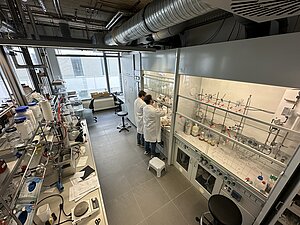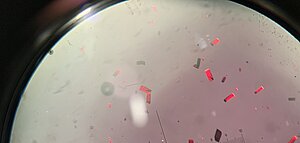Research
Synthesis
Organic chemistry provides tools to build molecular entities with various functionalities, including color, luminescence, and stimuli-responsiveness. Our methodology ranges from classical reactions to modern synthetic methods (e.g., transition metal catalysis). Diversity is a key aspect of organic molecules, which we exploit to develop designer materials. Our focus is on π-conjugated small molecules, which possess intriguing photophysical properties.
Crystal growth
The ability to grow nice, shiny crystals is an art. A well-experienced materials scientist should be able to choose the best method for each molecule. The most common crystallization techniques include recrystallization (slow evaporation or diffusion of a poor solvent) and sublimation (gradient sublimation or physical vapor transport).
Crystallography
It might be surprising, but crystallography is a statistical method. With a number of diffractions, one can statistically derive the density of electrons, which can then be converted to a molecular model by a crystallographer. Imagination is also an important factor for crystallography, along with knowledge of its theory.









